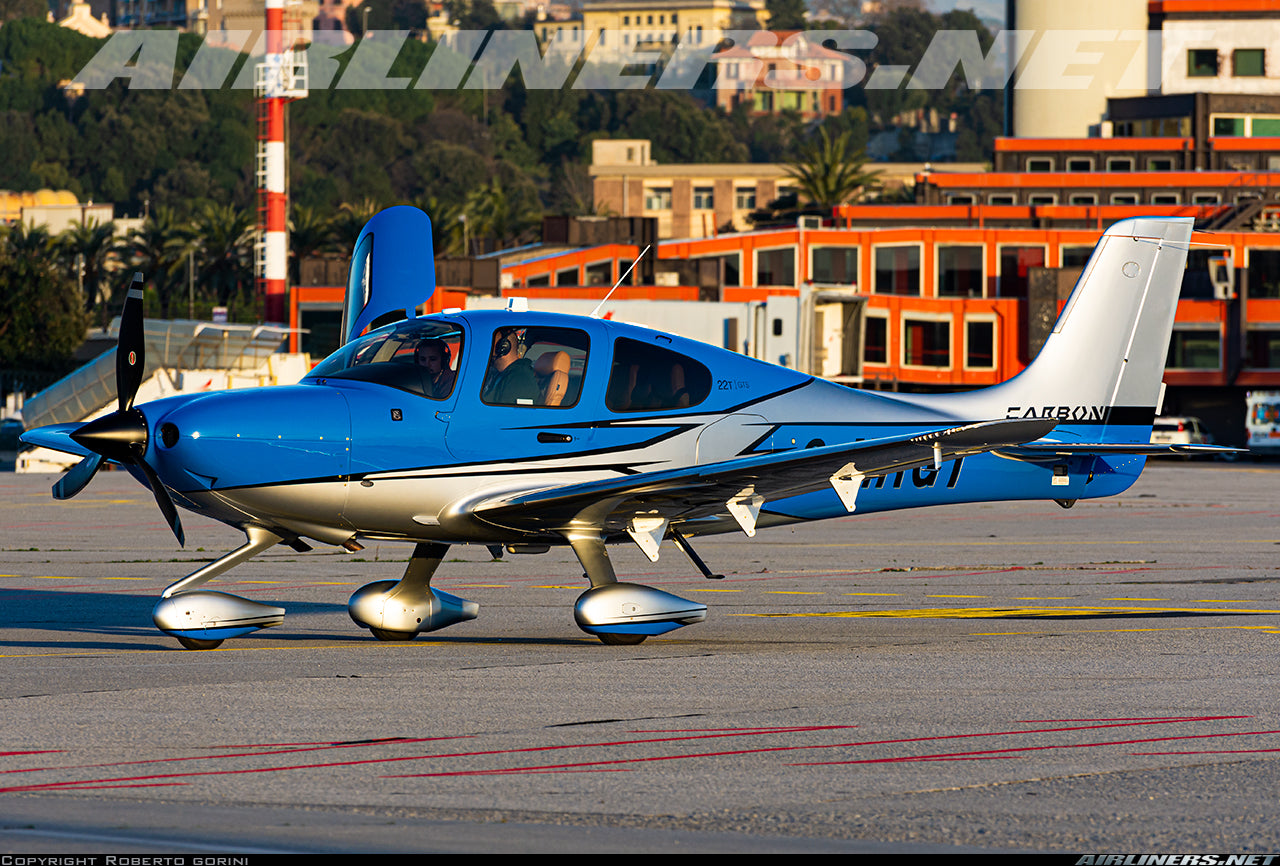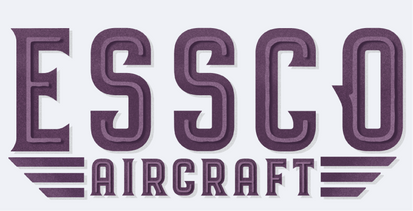
Number 32 of 100 in 100, the Cirrus SR22 🛬
Conceptualization:
The Cirrus SR22, officially certified in November 2000, arose during a period when the general aviation market was shifting towards more advanced and safer aircraft. Pilots and aircraft owners were increasingly demanding modern features, better performance, and enhanced safety capabilities. Cirrus Aircraft, led by founders Alan and Dale Klapmeier, recognized this need and aimed to create a high-performance, single-engine aircraft that would appeal to a broad range of pilots, including private owners and flight schools. The Cirrus SR22 was designed to combine cutting-edge technology with user-friendly features, addressing the market’s demand for advanced avionics, comfort, and safety. The SR22 built upon the success of its predecessor, the SR20, by offering more power and improved capabilities while maintaining a strong focus on safety with innovations like the Cirrus Airframe Parachute System (CAPS).
Original Design:
The original design of the Cirrus SR22 featured a composite airframe, which made it lighter, stronger, and more aerodynamically efficient than its metal counterparts. The aircraft was equipped with the Cirrus Airframe Parachute System (CAPS), a revolutionary safety feature designed to deploy a parachute for the entire aircraft in case of emergency. The SR22 is a low-wing cantilever monoplane featuring fixed (non-retractable) tricycle landing gear. Powered by a 310-horsepower Continental IO-550-N engine, the SR22 provided high performance with a cruise speed of around 180 knots and a range of over 1,000 nautical miles. The combination of these design elements made the SR22 a versatile aircraft suited for personal use and pilot training.

Photo Credit: airliners.net - Andre Wadman
Principal Designer:
The Cirrus SR22 was primarily designed by Alan and Dale Klapmeier, the co-founders of Cirrus Aircraft. The Klapmeier brothers were passionate aviators who sought to create a safer, more advanced aircraft for the general aviation market. Their previous project, the VK-30 provided valuable experience that influenced the development of the SR22 and its predecessor, the SR20. The SR22 was a continuation of their vision to innovate in aviation by integrating advanced safety features like the Cirrus Airframe Parachute System (CAPS) and modern avionics into a high-performance aircraft. The engineering team at Cirrus played a crucial role in bringing the Klapmeiers’ vision to life, focusing on the use of composite materials, aerodynamic efficiency, and pilot-friendly technology. After the SR22, Cirrus Aircraft continued to innovate with projects like the Cirrus Vision SF50, a single-engine personal jet that further demonstrated the company’s commitment to advancing general aviation.
Production Run:
The production of the Cirrus SR22 began in 2001 and continues to this day. With 7,737 units delivered from 2001–23, and in combination with the SR20, a total of 9,548, it is the most-produced general aviation aircraft of the 21st century. The aircraft’s production has seen variations in volume over the years, often influenced by economic conditions and market demand. The SR22 has remained popular due to continuous improvements and innovations. Notable production milestones include the introduction of the turbocharged SR22T in 2010, and the enhanced G5 and G6 variants in 2013 and 2017, respectively. These updates have kept the SR22 relevant and competitive, with Cirrus continuing to deliver several hundred units annually.

Photo Credit: airliners.net - Terry Wade
Evolution:
The Cirrus SR22 has undergone significant evolution since its launch, with numerous upgrades, modifications, and variants introduced to enhance its performance, safety, and comfort. The first major upgrade came in 2004 with the SR22 G2, which featured a redesigned airframe for improved aerodynamics and structural efficiency. In 2007, the SR22 G3 introduced a lighter carbon fiber wing, increased range and fuel capacity, and longer landing gear for increased prop clearance. The SR22 G5, launched in 2013, increased the aircraft’s maximum takeoff weight and also included a 60/40 split back seat, ADS-B transponder, and Garmin GFC700 autopilot. The G6 variant, introduced in 2017, further improved avionics with the ‘Cirrus Perspective Plus’ system and introduced modern conveniences like LED wingtip lights. In January 2024, Cirrus announced the G7 of the SR series. It includes a redesigned interior, Cirrus Perspective Touch+ flight deck with 35% larger instrument touch screens, a contextualized 3D taxi guide, stick shaker functions for the side-yokes to warn of an approaching stall condition, and several other new features. Each of these evolutions has contributed to maintaining the SR22’s status as a leading aircraft in the general aviation market.
Specifications:
Cirrus SR22 Specifications Sheet
General Information:
- Manufacturer: Cirrus Aircraft
- Model: Cirrus SR22
- First Year of Production: 2001
- Type: Single-engine, low-wing, four- or five-seat aircraft
- Construction: Composite material (fiberglass and carbon fiber)
Dimensions:
- Length: 26.0 ft (7.92 m)
- Wingspan: 38.4 ft (11.7 m)
- Height: 8 ft 11 in. (2.72 m)
Performance:
- Engine: Continental IO-550-N (Non-turbo) / TSIO-550-K (Turbocharged in SR22T)
- Horsepower: 310 HP (Non-turbo) / 315 HP (Turbocharged)
- Maximum Cruise Speed:
- Non-turbo: 183 KTAS (Knots True Airspeed)
- Turbocharged (SR22T): 214 KTAS
- Range:
- Non-turbo: 1,049 NM (nautical miles) with 92 gallons of fuel at long-range cruise settings
- Turbocharged (SR22T): 1,000 NM with 92 gallons of fuel
- Service Ceiling:
- Non-turbo: 17,500 ft
- Turbocharged: 25,000 ft
- Rate of Climb:
- Non-turbo: 1,270 FPM (feet per minute)
- Turbocharged: 1,200 FPM
- Stall Speed: 60 KIAS (Knots Indicated Airspeed)
- Takeoff Distance (50 ft obstacle): 1,868 ft
- Landing Distance (50 ft obstacle): 1,178 ft
Weights:
- Maximum Takeoff Weight: 3,600 lbs
- Empty Weight: 2,269 lbs
- Useful Load: 1,350 lbs
- Fuel Capacity: 92 U.S. gallons
Avionics and Technology:
- Avionics Suite: Garmin Perspective+ (Standard in G6 models)
- Glass Cockpit: Standard, with dual primary flight displays and multifunction display
- Autopilot: Fully integrated with Electronic Stability and Protection (ESP)
- Safety Features:
- Cirrus Airframe Parachute System (CAPS)
- Enhanced Vision System (EVS)
- Flight Into Known Icing (FIKI) capability (optional)
Interior:
- Seating Capacity: 4 to 5 seats (depending on configuration)
- Interior Options: Premium leather seats, luxury finishes, integrated air conditioning
- Baggage Capacity: 32 cu ft (905 liters)
Fuel Consumption:
- Fuel Burn:
- Non-turbo: 14-16 GPH (gallons per hour) at cruise
- Turbocharged: 18-20 GPH at cruise
Comparison to Other Aircraft in its Class:
The Cirrus SR22 is frequently compared to other high-performance single-engine aircraft like the Cessna TTx, Piper Malibu, and Beechcraft Bonanza. The SR22 stands out due to its combination of advanced avionics, robust safety features like CAPS, and a balance of speed, range, and comfort.
- Cessna TTx: While the TTx is faster with a top cruise speed of around 235 KTAS, it lacks the whole-aircraft parachute system and has a slightly lower service ceiling compared to the SR22T.
- Beechcraft Bonanza G36: The Bonanza offers a more traditional airframe and a higher payload capacity but doesn't match the SR22 in terms of modern avionics and safety features like CAPS.
- Piper Malibu: The Malibu offers pressurization and a longer range but is generally more expensive to operate and lacks the same level of advanced safety features.

Photo Credit: planespotters.net - Joey Van Gastel
Performance:
Cirrus SR22 Performance Envelope
V-Speeds (Important Speeds):
- V<sub>NE</sub> (Never Exceed Speed): 200 KIAS
- V<sub>NO</sub> (Maximum Structural Cruising Speed): 177 KIAS
- V<sub>A</sub> (Maneuvering Speed): 133 KIAS (at 3,400 lbs gross weight)
- V<sub>FE</sub> (Maximum Flap Extended Speed):
- 50% Flaps: 150 KIAS
- 100% Flaps: 110 KIAS
- V<sub>S</sub> (Stall Speed, Clean): 67 KIAS
- V<sub>SO</sub> (Stall Speed, Landing Configuration): 60 KIAS
- V<sub>Y</sub> (Best Rate of Climb): 104 KIAS
- V<sub>X</sub> (Best Angle of Climb): 81 KIAS
- V<sub>G</sub> (Best Glide Speed): 88 KIAS
G-Load Limitations:
- Flaps Up: +3.8g to -1.9g
- Flaps Down: +1.9g to 0g
Approved Maneuvers:
- Normal Category Maneuvers: The Cirrus SR22 is certified for normal category flight, which includes:
- Steep Turns: Up to 60° bank angle
- Chandelles
- Lazy Eights
- Stalls (except whip stalls)
- Emergency descent maneuvers
Prohibited Maneuvers:
- Aerobatics: The SR22 is not approved for aerobatic maneuvers, which include loops, rolls, and intentional spins. The aircraft's design is optimized for stability and safety, not for high-G, aggressive maneuvers.
Performance in Training and Personal Aviation Roles
- Training Role:
- Handling and Stability: The Cirrus SR22 is well-suited for advanced pilot training, particularly for those transitioning to high-performance aircraft. Its forgiving stall characteristics and stable flight behavior make it an excellent platform for practicing maneuvers like steep turns, stalls, and emergency procedures. The aircraft’s sophisticated avionics systems, including the Garmin Perspective+ suite, prepare pilots for handling more complex aircraft, making it ideal for both IFR (Instrument Flight Rules) and VFR (Visual Flight Rules) training.
- Safety Systems: The Cirrus Airframe Parachute System (CAPS) provides an additional layer of safety during training, offering peace of mind for both instructors and students, especially when practicing more challenging maneuvers.
- Personal Aviation Role:
- Performance: With a cruise speed of up to 214 KTAS in the turbocharged variant, the SR22 is capable of fast cross-country flights, making it ideal for personal travel. Its high service ceiling of 25,000 feet (in the turbo model) allows for flight above weather, enhancing comfort and safety during long trips.
- Comfort and Convenience: The SR22's spacious cabin, luxury interior options, and modern avionics make it highly appealing for personal use. Features like air conditioning, advanced autopilot, and the ability to fly into known icing conditions (with FIKI) add to its versatility and comfort.
- Ease of Use: Despite its advanced features, the SR22 remains user-friendly, which is crucial for personal aviation. The intuitive avionics and stability augmentation systems reduce pilot workload, making it accessible to less experienced pilots while still offering the performance and capabilities that more experienced aviators expect.
Safety Record:
The Cirrus SR22 has a mixed safety record, characterized by both significant achievements and notable concerns. The inclusion of the Cirrus Airframe Parachute System (CAPS) has been a game-changer. As of September 2018, pilots had deployed the SR-series parachute 79 times, with 163 survivors. This system, combined with advanced avionics and structural safety features, has helped reduce the SR22’s fatal accident rate, especially after Cirrus emphasized the use of CAPS as a first response in emergencies. However, the SR22 has also faced challenges, particularly with runway loss of control incidents and engine-related issues in the turbocharged SR22T variant. These incidents have sometimes led to accidents, though ongoing improvements in training and technology have mitigated many of these risks. When compared to similar aircraft, the SR22 has a lower overall accident rate but a higher proportion of fatal accidents, reflecting the high-performance nature of the aircraft and the importance of proper pilot training and judgment. Despite these challenges, Cirrus's efforts to enhance safety through initiatives like the “Cirrus Approach” training program have been recognized within the aviation industry, contributing to a safer flying experience for SR22 pilots.
Acquisition Cost:
When the Cirrus SR22 was first introduced in 2001, its base price was around $290,000 to $300,000, making it a premium choice in the single-engine piston aircraft market. Over the years, the cost of acquiring a Cirrus SR22 has increased significantly, with a brand-new 2024 SR22 G7 priced between $1,043,900 and $1,289,900, depending on the configuration and options chosen. This increase reflects the continuous enhancements in technology, safety, and luxury features that Cirrus has incorporated into the SR22. In the used market, prices for earlier models vary widely, ranging from approximately $219,000 to $399,900, with an average price of around $286,758. The SR22’s ability to retain its value well over time is indicative of its strong reputation and ongoing demand in the aviation community.

Photo Credit: airliners.net - Juan Carlos Villagomez
Bibliography:
Cirrus Owners and Pilots Association (COPA)
Aircraft Owners and Pilots Association (AOPA)
National Transportation Safety Board (NTSB)
